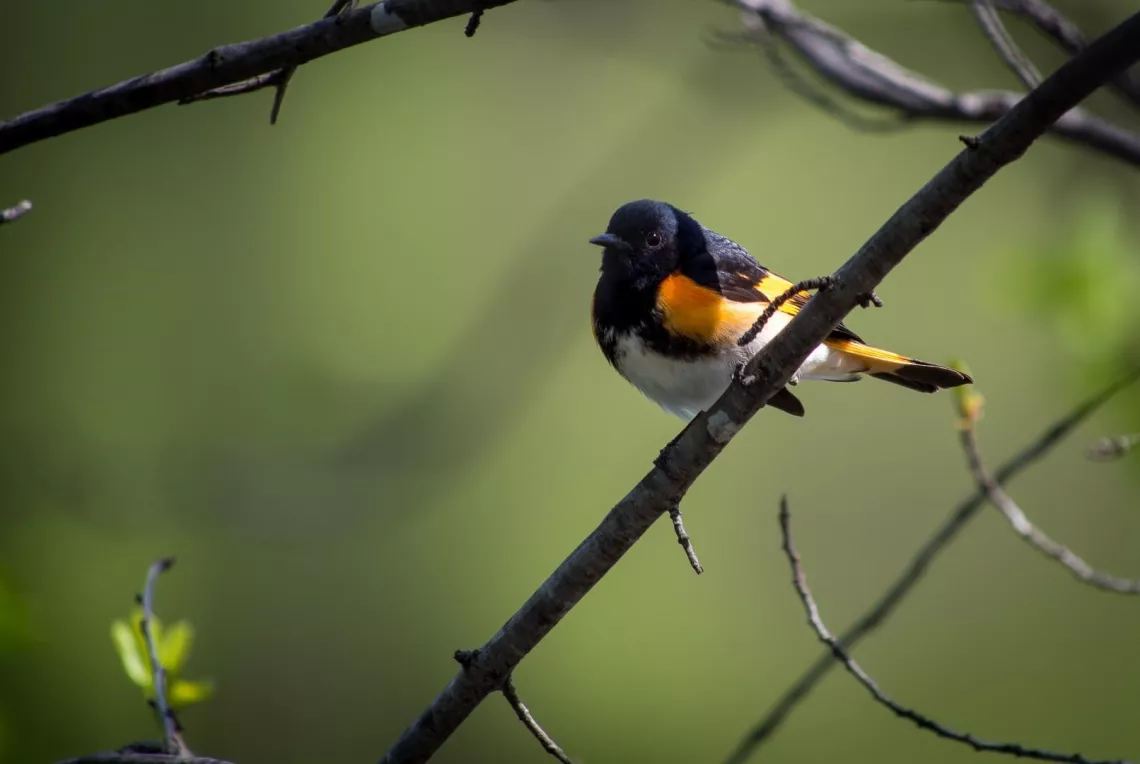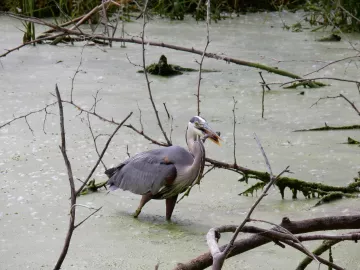Bob Suchanek
The Birding Game
Birding is my favorite spectator sport. It’s free and the players are always on the field; an around-the-clock, action-packed display of visual and auditory virtuosity with stakes that are nothing less than life itself.
I suppose part of my attraction to the birding game is admiration and respect for a league that’s been purposefully in place for over 150 million years, well before the first known bird, Archaeopteryx, was fossilized. Birds are dinosaurs, with some power players like Tyrannosaurus rex on the family tree.

These days, the male American Redstart is one of the star players. Appearing in the striking black and orange colors of the Cincinnati Bengals, this lively warbler hops from branch to branch, flashing his colors and stirring up hidden insect meals.
The redstart is a seasonal player (late spring to mid-fall) but there are plenty of other players on the field anytime and everywhere. During the winter I’ve often seen snowy owls sitting on top of freeway light poles, perhaps looking for exposed prey in open areas along the road. On March 12th this year I saw a small hawk, perhaps a kestrel, descend from its high observation pole along 35E and land on the median presumably to capture a hapless rodent or rabbit. Eagles, swans and other open water-dependent birds are privileged to have power plants on the Mississippi provide warm water year round.

Birders, like other sports enthusiasts, love to photograph their favorite players in action. Redstarts are a hyperactive challenge as are most avian hunters on the move. My pick for “most photogenic player” is the great blue heron. This big wading bird is incredibly patient in its steadfast focus on a small patch of water, waiting for a careless frog or fish to come within range of her lightning-fast jab and grasp. The common egret is a beautiful photogenic wader, but tends to be skittish. Birds have various proximity tolerances that birders learn to respect.
So, welcome to birding: one of the greatest shows on earth. No tickets needed: just pull up a seat, pull out your binoculars and enjoy.
Bob Suchanek is a volunteer leader with the Sierra Club North Star Chapter’s Water and Wetlands Stewards Team. Contact him at this link.